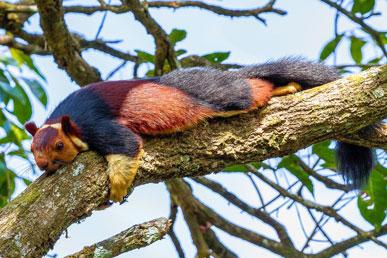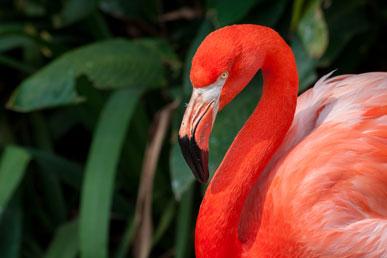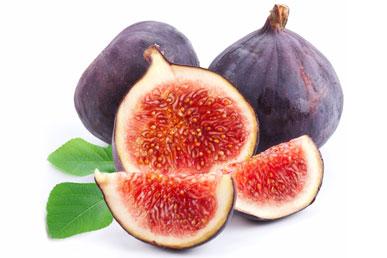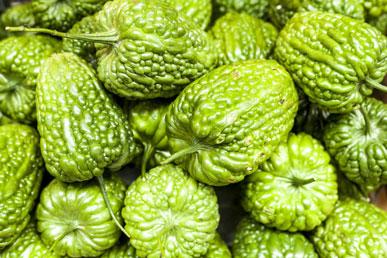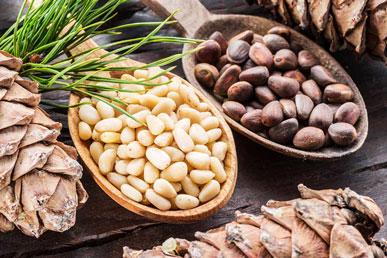The fauna of our planet will never cease to amaze us with the presence of amazing creatures of the most unusual shapes and colors. Some of them are so whimsical that it seems that nature created them in a playful mood. We present to your attention another selection of the most amazing, unusual and little-known creatures from different parts of the globe.
Aardvark


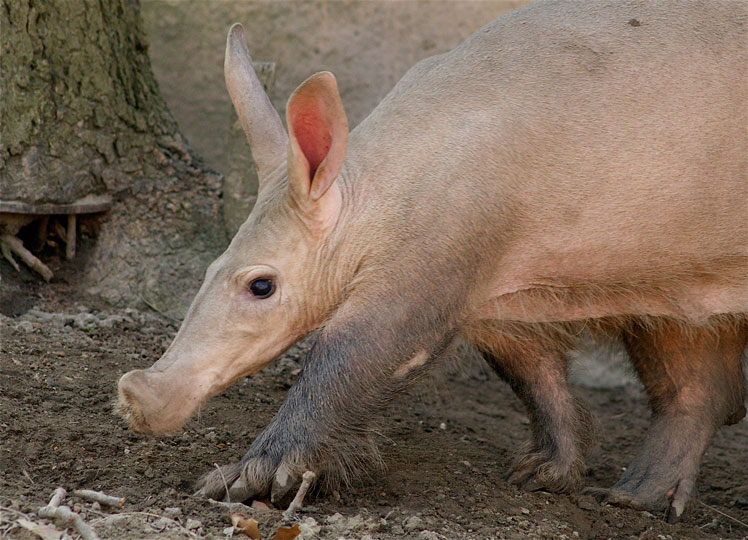


The aardvark, or African aardvark, or Cape aardvark, or earth pig, is a medium-sized mammal resembling a pig in appearance with an elongated muzzle, hare ears and a strong, muscular tail similar to that of a kangaroo.
The aardvark got its Russian name because of the peculiar structure of the molars, which consist of fused dentinal tubules, are devoid of enamel and roots and are constantly growing. The olfactory region of the skull is greatly enlarged; smell is the strongest sense. Inside the snout of an aardvark there is a kind of labyrinth of 9-10 thin bones, which is not typical for other mammals.
The body length of an adult aardvark is 100–158 cm, it weighs up to 100 kg. Females are slightly smaller than males, with a white-tipped tail (apparently this allows the cubs to follow their mother in the dark).
The aardvark lives in a wide variety of landscapes in Equatorial Africa, avoiding only dense rain forests, swampy areas, and areas of rocky soils where it is difficult to dig. Prefers savannas. Aardvarks often inhabit areas that are flooded during the rainy season, as their loose soil is most suitable for digging. The main factor limiting the abundance and distribution of the species is, apparently, the presence of ants and termites, the main food of the aardvark.
This secretive, inconspicuous animal is only active at night. Occasionally, an aardvark can be seen basking in the sun at its burrow. Even in hard, dry ground, it quickly digs holes with its strong forepaws. Able to easily break through the strong walls of termite mounds. See how he does it in the short documentary at the end of the article.
Interesting fact
In soft ground, an aardvark digs holes faster than a few people with shovels. A hole 1 meter deep is dug in less than 5 minutes.
The aardvark is rather slow and clumsy. At the slightest suspicious rustle, he hides in a hole or digs in. Taken by surprise, it defends itself with powerful front paws, or falls on its back and defends itself with all paws and a muscular tail. Swims well. Its natural enemies are the lion, leopard, cheetah, hyena-like dogs and pythons, smaller predators cannot cope with the aardvark. The main enemies of aardvarks are spotted hyenas and humans. Hyenas and pythons tend to prey on the young.
As a rule, aardvarks are silent, only when they are very frightened they emit a semblance of a lowing cry. Their common sounds are noisy sniffling and grunting.
Although aardvarks are sometimes hunted for their pork-like meat, tough hide, and teeth, the species is not a protected species. Its numbers are not exactly known, but it is believed to be gradually declining. The aardvark does some good in controlling termite populations that damage crops. However, aardvark burrows often spoil agricultural land.
Tragopan satyr

Male | wikimedia.org

Female | wikimedia.org
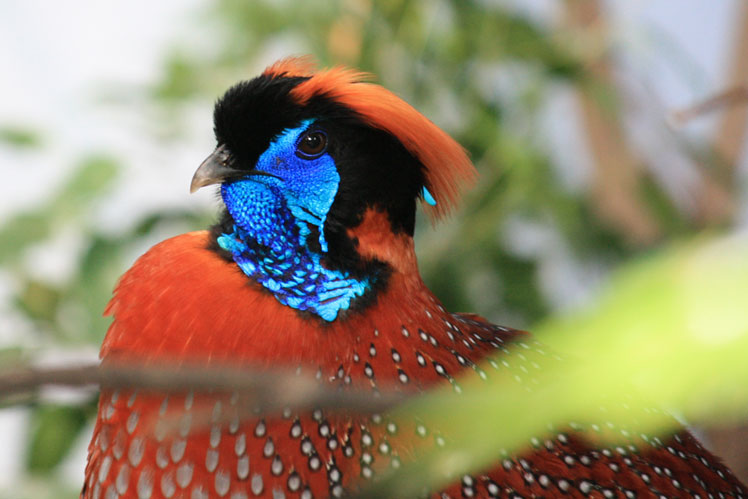

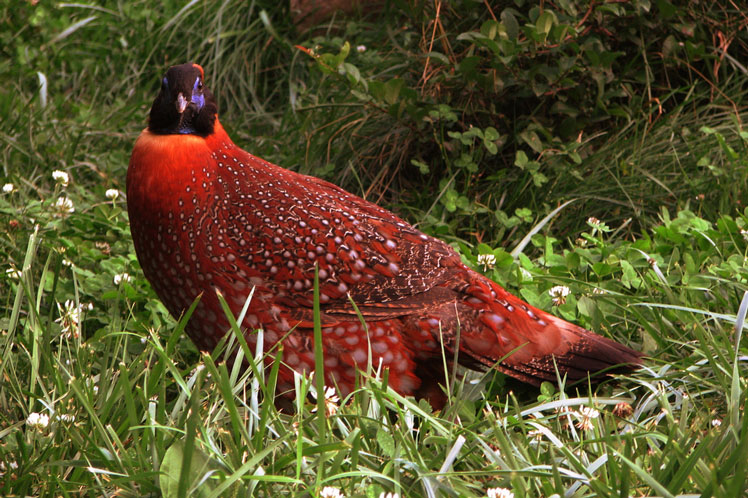
The satyr tragopan, or red tragopan, also known as the crimson horned pheasant, is an Asian bird of the pheasant family. The male and female are distinctly different in size and plumage coloration. Males are red with blue, black and white spots and freckles. And the females are brown.
During the mating season, male satyr tragopans grow blue horns and gular wattle. They usually puff out their horns and hide behind a rock, waiting for the females to pass by. And when the female passes by, the male puts on an elaborate mating display. At the end of the show, the male will stretch out to his full height and show off all his decorations. You will see this fantastic transformation in two short videos at the end of the article.
These birds are common in India, Nepal, Sikkim, Bhutan, South China and Tibet.
The rooster is beautifully colored and reaches a length of 67 to 72 cm and weighs 1,5 to 2 kg. The mottled brown-beige female reaches a length of approximately 58 cm and weighs from 1 to 1,5 kg.
Tragopan satyr feeds mainly on plant material: herbs, leaves, berries, and insects.
Persian carpet worm

The Persian carpet worm (pseudobiceros bedfordi), or Bedford flatworm, is a large polyclad flatworm approximately 8–10 cm long. It has a characteristic pattern consisting of a brown or black background, with many transverse bilateral pink lines around thousands of closely spaced bright yellow spots. and pink wavy spots with stripes on the sides of the body.
The Persian carpet worm is found in Indonesia, Malaysia, Kenya, Micronesia, Northern Mariana Islands, Thailand, Australia, Philippines, Solomon Islands, Myanmar and Palau. It lives on coral debris and ledges in rear reefs, coastal bays and lagoons.
Persian carpetworms, which are both male and female, have two penises which they use to enclose the penis in an attempt to inject sperm into their opponents to impregnate them while at the same time trying to avoid being impregnated by their opponents.
This worm moves quickly and can swim by swinging its body.
Dressing



Ligation (marbled polecat), or peregusna, or marbled polecat lives in Eastern Europe, Western and Central Asia. In appearance, it resembles the forest and steppe ferret, but is a smaller species than them. The name "marble" animal received from the wrong dark brown and yellowish spots on the back.
Bandages have a body length of 29 to 38 cm and a tail length of 15 to 22 cm. The weight of adult bandages is 370 to 730 grams. Unlike many species related to ligation, males and females of these animals are of the same size.
They inhabit dry areas where there are no trees, such as steppes, semi-deserts and deserts. Sometimes they are also found on foothill plateaus overgrown with grasses. Nowadays, many bandages live in parks, vineyards, and even among human settlements.
The lifestyle of bandages is similar to that of the steppe ferret. They are active mainly at dusk or at night, occasionally hunting during the daytime. As a rule, they spend the day in their mink, which they dug either themselves or adopted from other animals. Outside the mating season, ligation live alone.
Bandages hunt both on the ground, where they sometimes stand on their hind legs to have a better view of the terrain, and on trees that they can climb. Most often, however, they hunt in the underground passages of various rodents, in which they sometimes even settle. Their food includes mainly gerbils, voles, ground squirrels, hamsters, as well as birds, various small vertebrates and insects.
Large thick-leaved moth
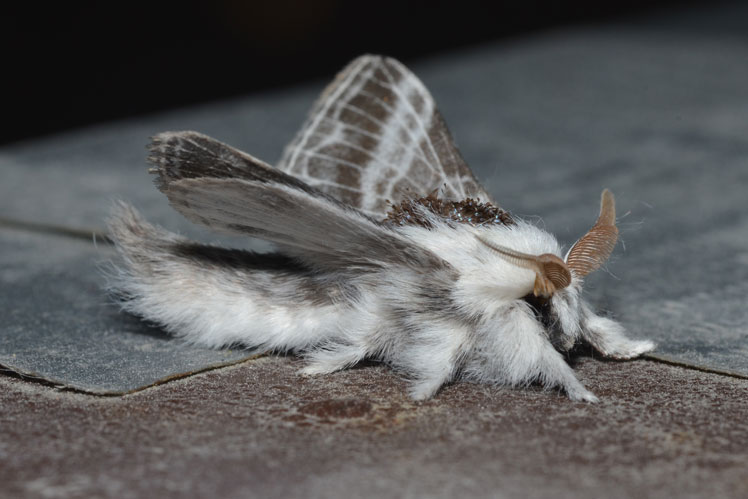

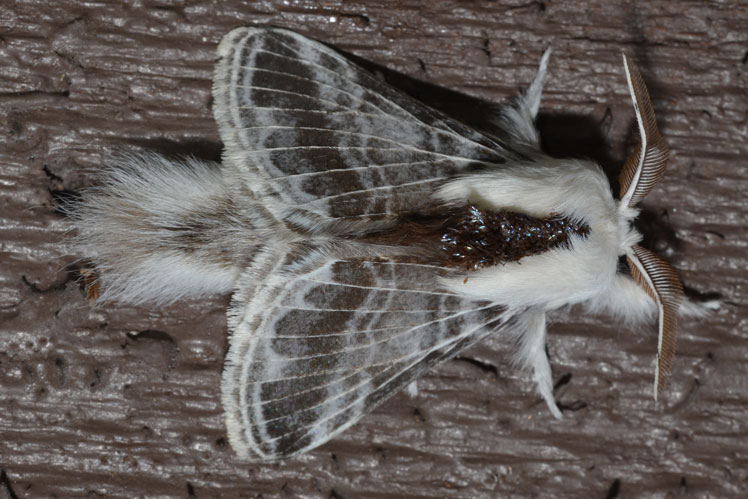

The large thick-leaved moth (tolype velleda) is found only in North America from Nova Scotia to central Florida, west to Texas, and north to Ontario. These fluffy butterflies are uniquely characterized by a patch of dark metallic scales along the back of the thorax.
As caterpillars, they often feed on apple, poplar, and oak trees, but adult butterflies cannot eat because they lack functional mouthparts and a digestive tract.
The wingspan of the large thick-leaved moth is 32–58 mm. Females are larger than males. Males have whitish veins and a broad, dark gray subterminal stripe on the forewings. The hindwings are dark gray with or without a whitish median stripe. Females have similar markings, but are paler and less contrasting.
Adults fly from July to September, one generation per year.
Secret Creatures: African Earth Pig, Aardvark
You can turn on subtitles in the player and select their translation into Russian in the settings
Aardvark fleeing a hyena
The mating dance of a satyr tragopan
We also recommend:
◆Alpaca, Spider with a happy face, Fossa, Bullfrog, Dracula parrot: the most unusual animals


